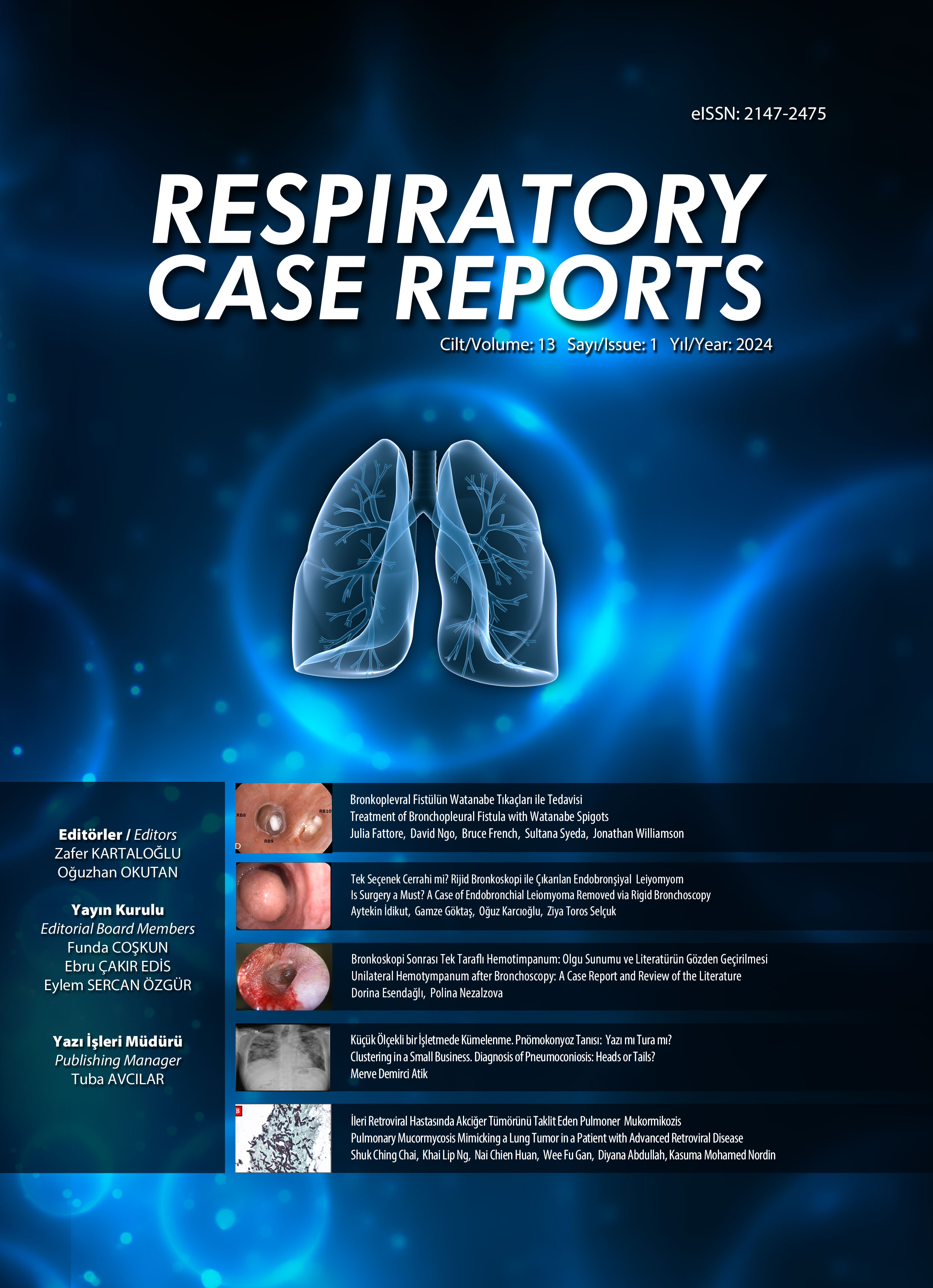

Acinetobacter Pnömonisi İlişkili Septik Pulmoner Emboli
Emine Afşinİzzet Baysal Devlet Hastanesi, Göğüs Hastalıkları Kliniği, BoluSeptik pulmoner emboli, birincil enfeksiyon kaynağındaki mikroorganizma içeren trombüsün dolaşıma karışması sonucu, pulmoner arterlerde enfarkt ve akciğer parankiminde bilateral multipl nodül ve/veya kaviteye yol açan nadir bir enfektif akciğer hastalığıdır. Olgumuz, 58 yaşında KOAH alevlenme tanısıyla yatırılmış olup, yatışının 4. gününde ateş, öksürük, nefes darlığında artış, akciğer grafisinde bilateral yaygın infiltrasyon gelişmesi üzerine yoğun bakımda invazif mekanik ventilatörde takip edildi. Toraks bilgisayarlı tomografisinde; periferik yerleşimli ve bazıları kaviter olan nodüller, infiltrasyon, maximum 1 cm olan mediastinal lenfadenomegali, bilateral plevral effüzyon ve besleyici damar belirtisi izlendi. Geniş spektrumlu antibiyotik ve antifungal tedaviye yanıt alınamayan hastanın exitusundan sonra trakeal aspirat kültüründe Acinetobacter baumannii / calcoaceticus (antibiyogramındaki antibiyotiklerin tümüne dirençli) üremesi saptandı. Mortalitesi yüksek olan septik pulmoner emboli etyolojisinde gram negatif pnömoni saptanması nadir bildirilmiş olup, bu nedenden dolayı olguyu literatür eşliğinde tartışmayı amaçladık.
Anahtar Kelimeler: acinetobacter, pnömoni, septik pulmoner emboliSeptic Pulmonary Embolism Associated with Acinetobacter Pneumonia
Emine Afşinİzzet Baysal State Hospital, Chest Diseases Clinic, BoluSeptic pulmonary embolism is an infective lung disease that leads to infarction in the pulmonary arteries and bilateral multiple nodules and/or cavitations in the lung parenchyma resulting from the circulation of thrombus in the bloodstream as infected with microorganisms in the primary infectious focus. A 58-year-old case we have presented was hospitalized with the diagnosis of COPD exacerbation and was taken to the intensive care unit to be monitored in the invasive mechanical ventilator because of fever, cough, increased dyspnea and development of bilateral diffuse infiltration encountered by chest x-ray. Thoracic computed tomography encountered peripherally localized and partly cavitary nodules, infiltration, mediastinal lymphadenomegaly with a maximum diameter of 1 cm, bilateral pleural effusion and feeding vessel sign. After exitus of the patient who was unresponsive to broad spectrum antibiotic and antifungal therapy; tracheal aspirate culture test indicated the growth of Acinetobacter baumannii /calcoaceticus (resistant to all the antibiotics in the antibiogram). The detection of Gram Negative Pneumonia has been rarely reported in the etiology of septic pulmonary embolism that presents a high mortality rate, therefore, we aimed to discuss that case in the light of literature data.
Keywords: acinetobacter, pneumonia, septic pulmonary embolismOlgunun Görüntü Kesitleri
Sorumlu Yazar: Emine Afşin, Türkiye
Makale Dili: İngilizce











